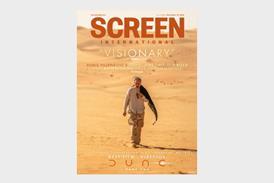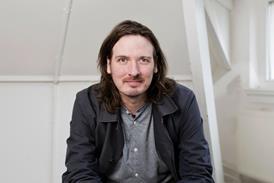If the key to navigating a volatile and uncertain market is concentration on core strengths, then Disney has got it right.
And the rock on which the future will be built is the Disney brand itself, according to Mark Zoradi, president of Walt Disney Motion Pictures Group.
Over the last couple of years, the studio has focused on a consistent message that is understood worldwide.
The bottom line, says Zoradi, is that parents understand they can trust Disney not to stray beyond the family comfort zone.
'Our films have to have some kind of positive value or message, not preachy, just a positive subject. There can be lots of love and romance but no overt sexual content.
'We don't want bad language, we've got lots of action adventure but with no gratuitous violence - no severed heads, no blood spurting.'
Zoradi does not believe such thinking is restrictive. 'We can make any movie we want to, whether it's Pirates Of The Caribbean or National Treasure, or (The Chronicles Of Narnia:) Prince Caspian.'
While the limits of that flexibility may become an issue in future no one can fault its logic. And that consistency stretches to the roll-out of its products.
Disney is pursuing a 'less is more' approach with fewer but stronger films that can be effectively marketed worldwide.
'We've trimmed our line-up down, to let's call it 14-16 movies a year and the majority of those are Disney-branded movies. And we're quite selective in non-Disney-branded category and you add to that four or five Miramax movies and one or two local acquisitions. That takes us up to about 20 movies a year and that's just about right.'
The feature animations remain the cornerstone of the Disney brand, and the studio has committed to make two a year over the next five years and sometimes three - starting with Wall.E this summer.
But the back-to-basics approach to its brand is matched by an impressive embrace of new technology and multimedia opportunities. Disney has shown a genius for using a variety of media platforms to create franchises that can be exploited where they will have the greatest impact. High School Musical is the perfect example of a cross-media product. The third instalment will be the first to open theatrically after two TV launches.
But the most obvious adoption of technology is in 3D. 'We've made a huge commitment to 3D,' says Zoradi. 'Going forward we have all of our animations and a number of our live action. On our slate we have announced 10 movies over the next three and a half years that will be in 3D.'
The investment in 3D also demonstrates the risks Disney is taking. In the US, the pace of 3D installation in cinemas is picking up but internationally it is painfully slow, a fact Zoradi admits is the cause of 'modest frustration'.
He does not offer any easy clues whether 'modest' is code for angry or worried and Zoradi is convincing in his belief that such difficulties are details in a much bigger, coherent plan.
That plan will be tested to the full by a tough market and trends that Disney cannot control - Prince Caspian has already suffered in the US from blockbuster congestion in theatres.
For Zoradi, if the brand is right, the business will follow.





















No comments yet